I’d been wanting to visit the Uffizi Gallery for years. I still can’t quite believe that I finally did. In 2007 I was invited to give a lecture at the University of Bologna. From Bologna it's only an hour or so to Florence by train so I also made a day trip to Florence. I arrived early in the morning, or so I thought, but even so there was already a long queue at the entrance of the Uffizi Gallery. So I decided to visit the Palazzo Pitti and the Boboli Gardens instead. Some years later, in 2012, I made a road trip through Tuscany and Umbria. I had scheduled two full days for Florence, but unfortunately on the day that I had planned to visit the Uffizi Gallery I was too sick to leave my hotel room. The next day I felt much better and I visited the Palazzo Vecchio and the Duomo.
I’d been thinking of going to the Venice Biennale again and since it’s only two hours by train to Florence I thought I’d combine the two.
I had booked a ticket for 8:15 in the morning on a Wednesday, which is supposedly the day when it is least crowded. October is not exactly high season, but I guess there is no low season in Florence.
I didn’t want to leave anything to chance so I made sure to be at the entrance at around 7:45 am. At that time there were about 20 people in front of me. My hotel was near the Santa Maria Novella train station, about 15 minutes walk from the Uffizi Gallery (at my pace). If you book a hotel in the historic centre then, of course, you could be at the entrance within minutes and even have time to have breakfast at your hotel. I skipped breakfast and bought some bread rolls along the way to eat while standing in line.
By the time the doors opened the queue extended all the way to the end of the building. Had I arrived at the scheduled time there would have been some 250 people ahead of me.
What I sometimes do when visiting a museum or exhibition is to skip the first two or three rooms, to have at least some rooms to myself and to then visit the first rooms before I leave. But as I like to take my time the other visitors usually catch up with me at some point. At the Uffizi I noticed that most visitors were overwhelmed by the splendor of the second floor corridor so I decided to save that till last and just start in the first room with Medieval painting.
At 9 o’clock, by which time I had reached the Botticelli room, it was already pretty crowded. This is also because some tour groups head straight for "The Birth of Venus" and then move on to Leonardo da Vinci and Michelangelo.
The Uffizi Gallery occupies the first and second floors of a beautiful building designed by Giorgio Vasari and constructed between 1560 and 1580. With a floor space of almost 13,000 square metres it is one of the largest art museums in the world. I ended up spending almost five hours inside. I would have loved to return the next afternoon to have a closer look at some paintings.
Below is a selection of some of my personal highlights.
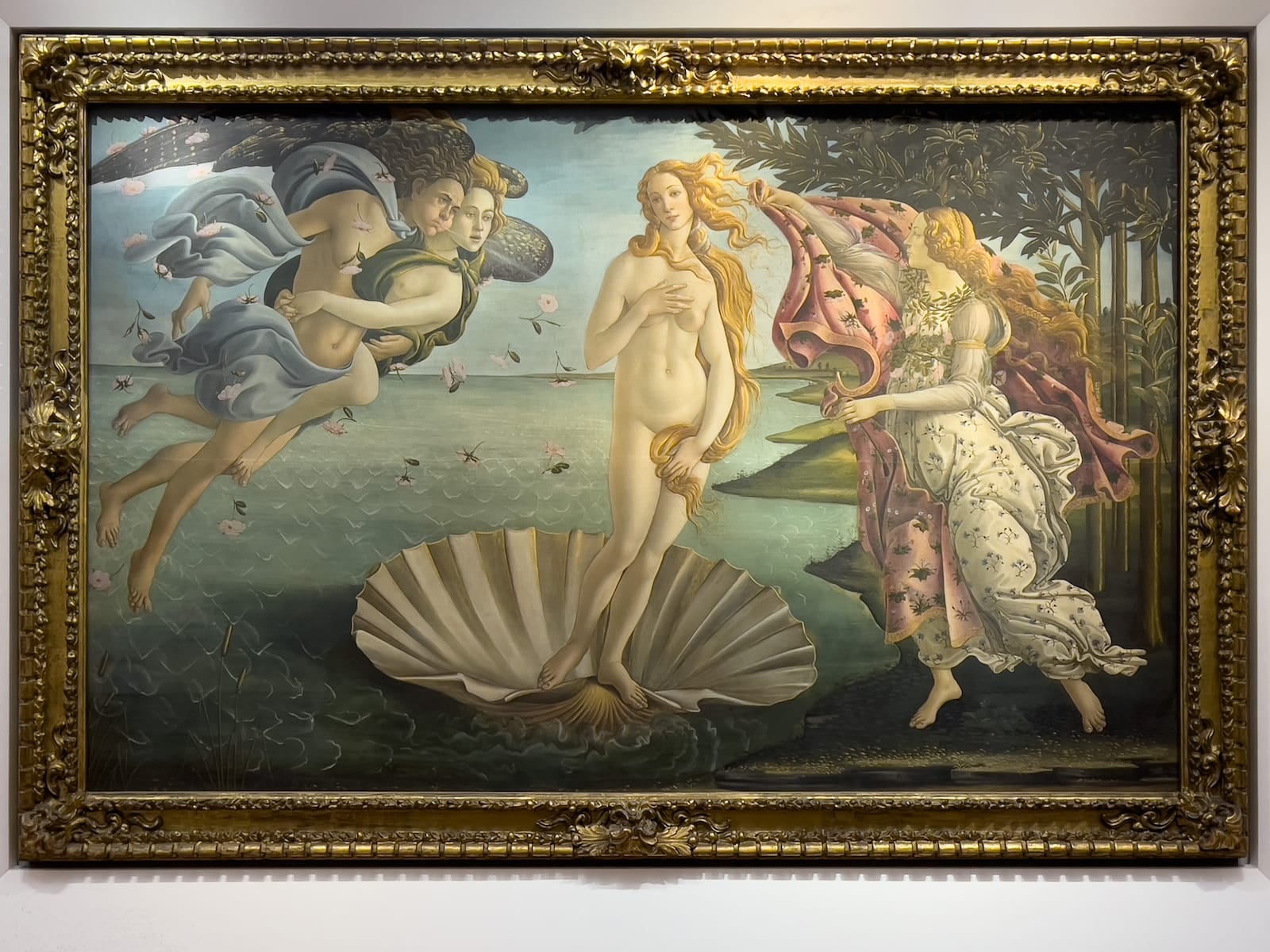
Botticelli’s "The Birth of Venus" is one of the treasures of the Uffizi and for good reason. It is an amazing painting and what a joy to finally see it in real life. "The Birth of Venus" captures the moment when the goddess of love and beauty, born of the sea foam and propelled by the winds, reaches the island of Cyprus.
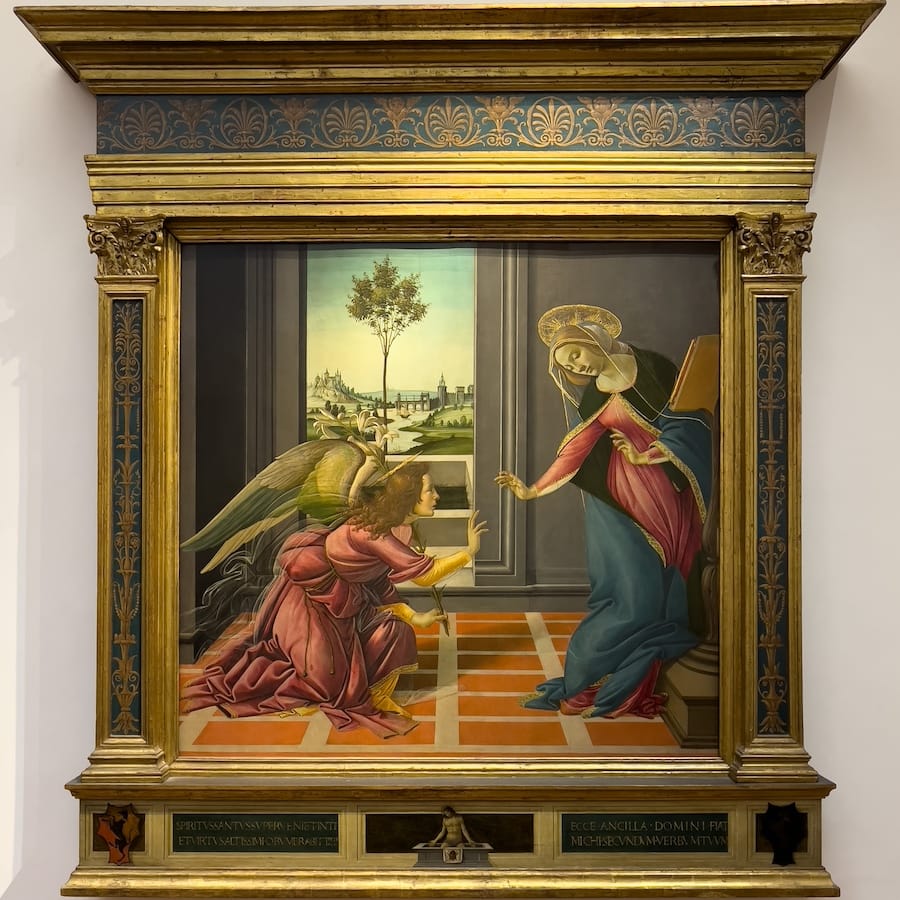
Of course, what I enjoy about visiting a museum such as the Uffizi Gallery is not only to see works of art that I already know, but also to discover works of art that I didn't know. The "Cestello Annunciation" (1489-90) is another painting by Botticelli. I was fascinated by the landscape in the background. It wasn't until the early 16th century that painters zoomed in on the landscape, making it the subject of the painting. The landscape painting was invented, as I think Hans Belting also argues in Spiegel der Welt. Die Erfindung des Gemäldes in den Niederlanden (Mirror of the World. The Invention of Painting in the Netherlands).
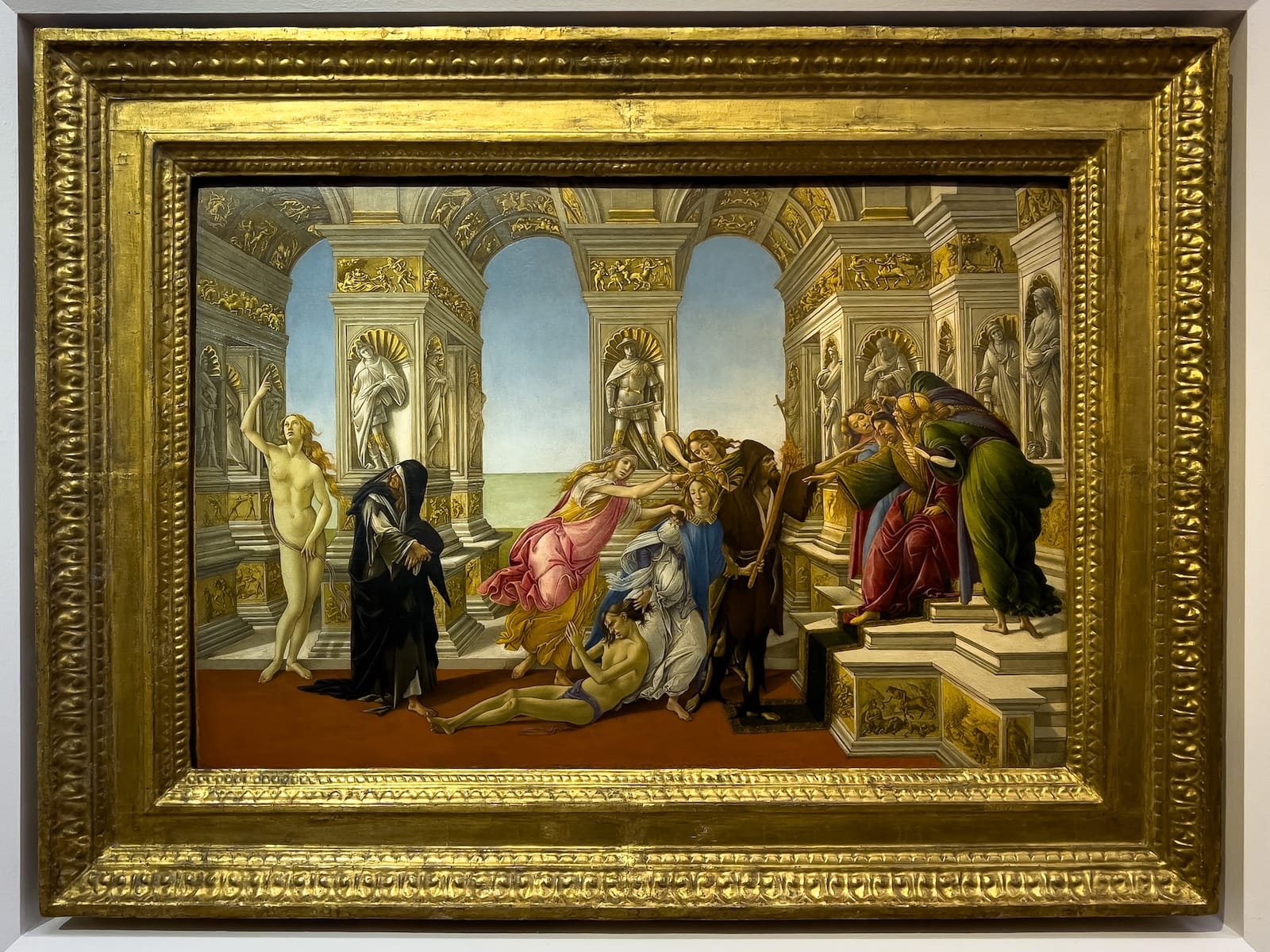
"The Calumny of Appelles" (1495) is an amazing allegorical painting by Botticelli. On the right, seated in a chair, we see King Midas, poorly counselled by Suspicion and Ignorance, as he prepares to judge a victim of slander, who is dragged by the hair by Calumny, accompanied by Fraud, Deception and Spite. On the left, Repentance looks at the naked Truth, who raises her gaze to heaven.
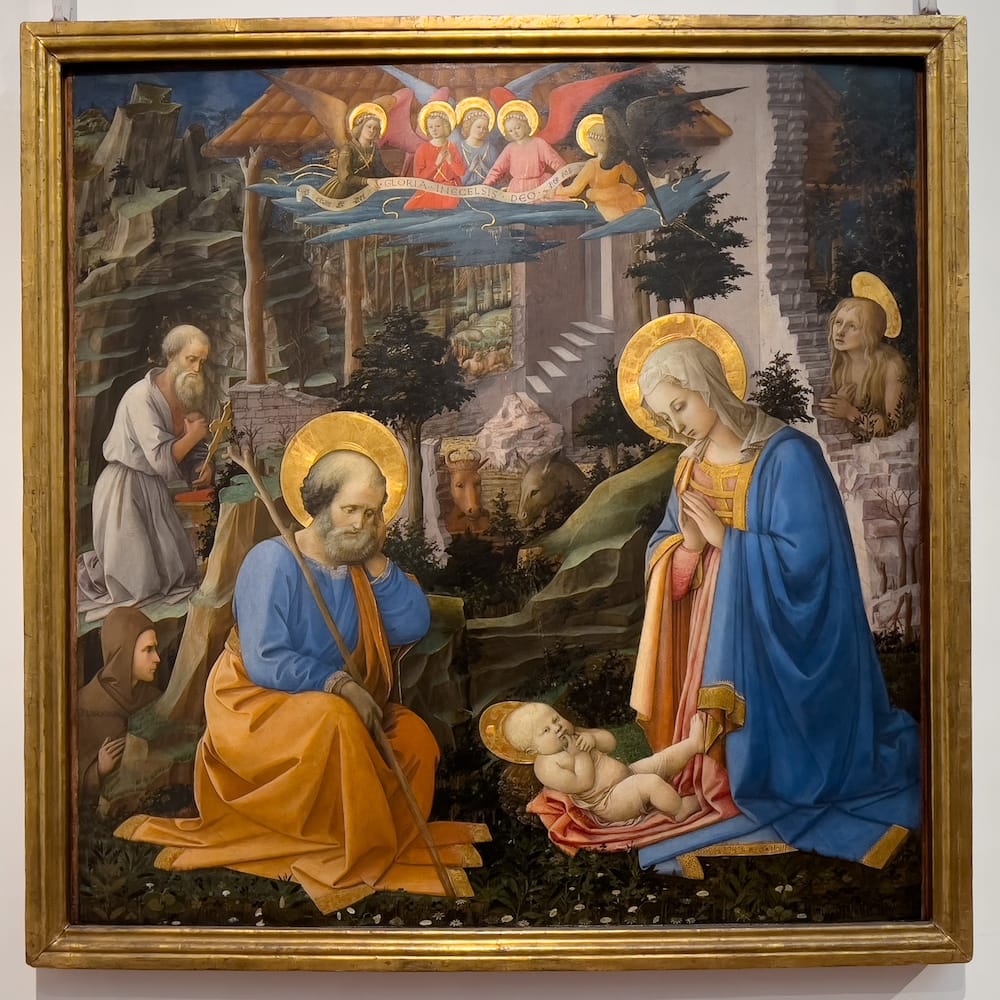
I was intrigued by the composition of "Adoration of the Christ Child with St. Joseph, St. Jerome, St. Hilarion, St. Mary Magdalen and Angels" (1455) aka "Adoration of the Child with Saints" by Filippo Lippi. It's like a pre-modern collage.
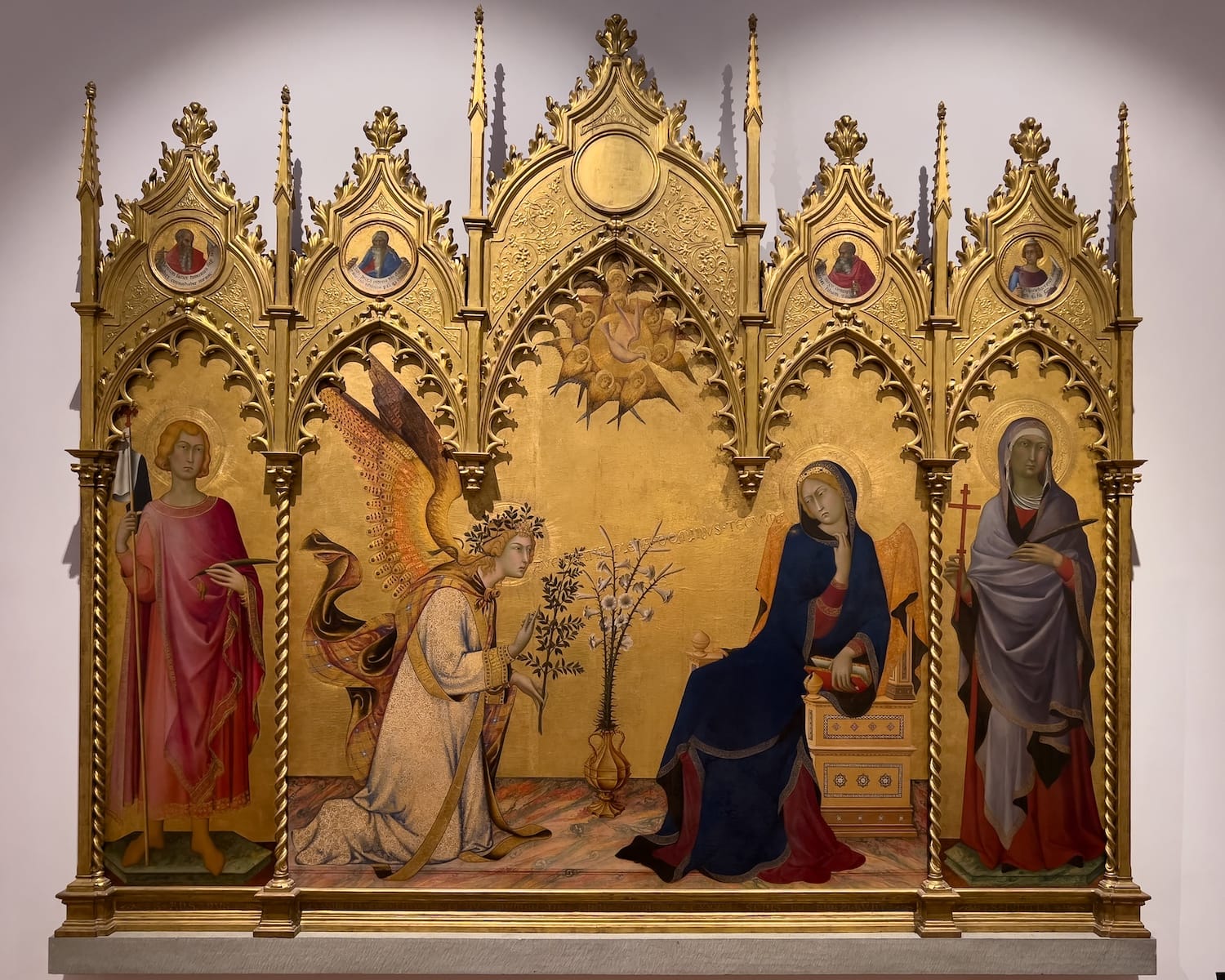
This panel was painted for the altar of St. Ansanus in the Siena cathedral. What I found interesting is that the Archangel Gabriel's greeting to the Virgin is engraved on the gold background, almost in the manner of a cartoon or comic book.
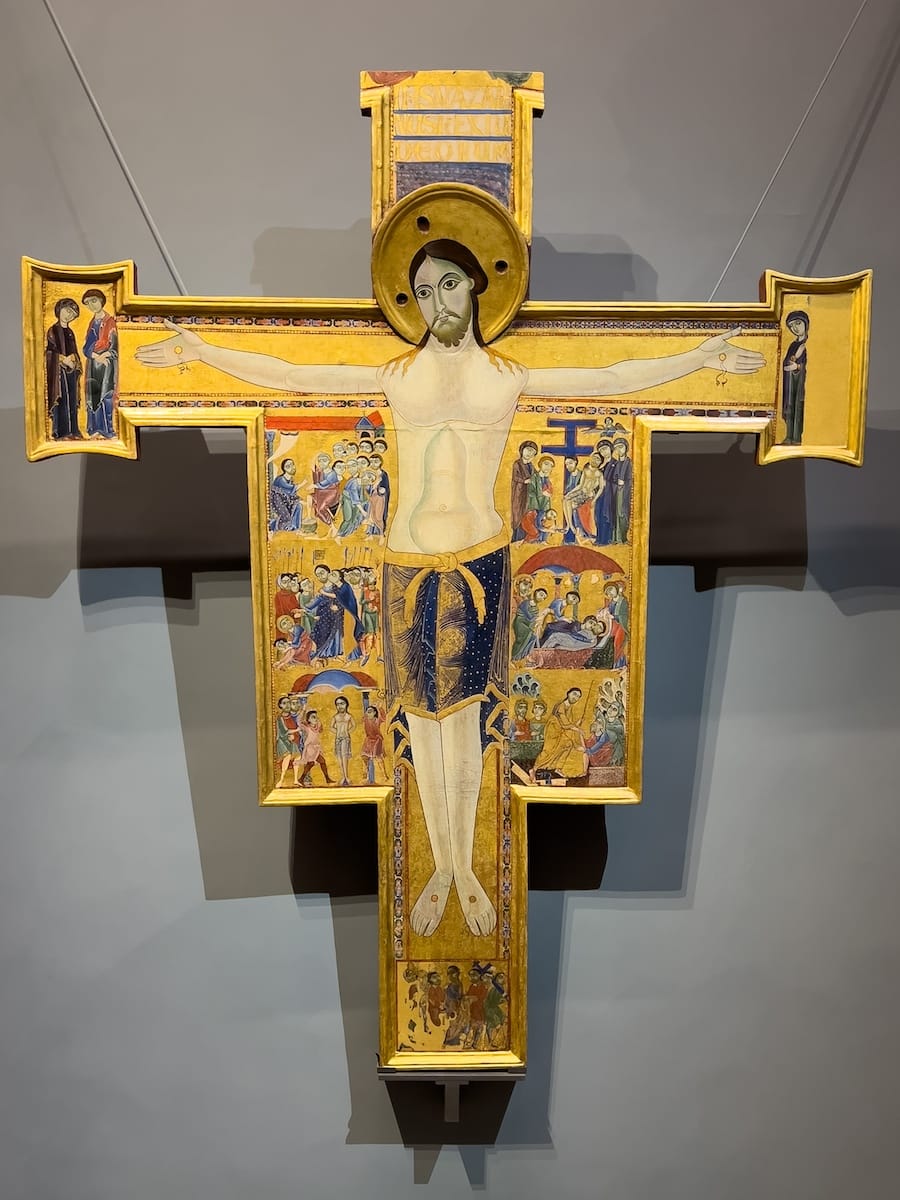
The contoured cross is typical of central Italy and became widespread in the thirteenth century. In this particular painting the figure of Christ is depicted according to the Byzantine style, alive and victorious over death - "Christus triumphans" - and with a loincloth of fine, gold-trimmed fabric. To the sides, on the apron, are scenes from the Passion and Redemption. Zooming in these almost look like cartoons or comic books.
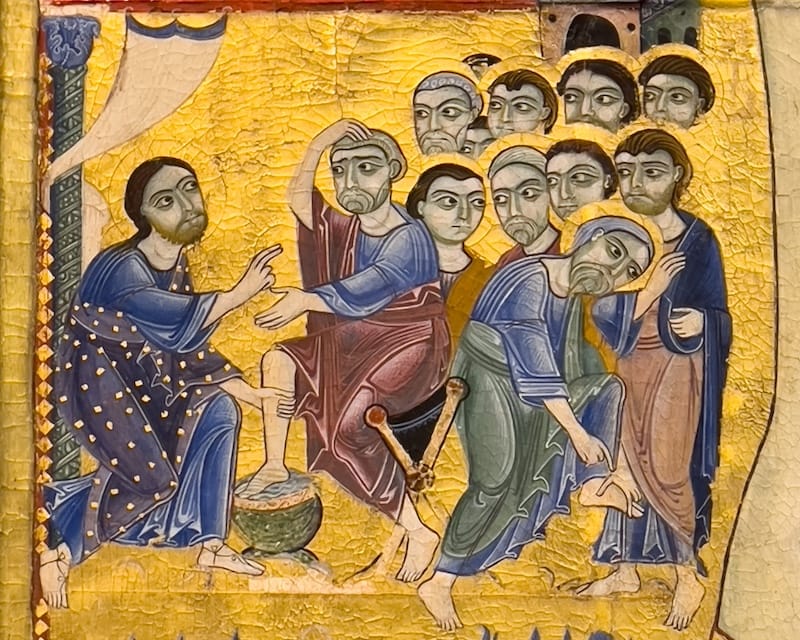

This painting by an unknown artist shows a Christian prayer book. The painter did not paint actual words, only signs that look like words, but I love the fact that the painter tried to get the curvature of the pages right.

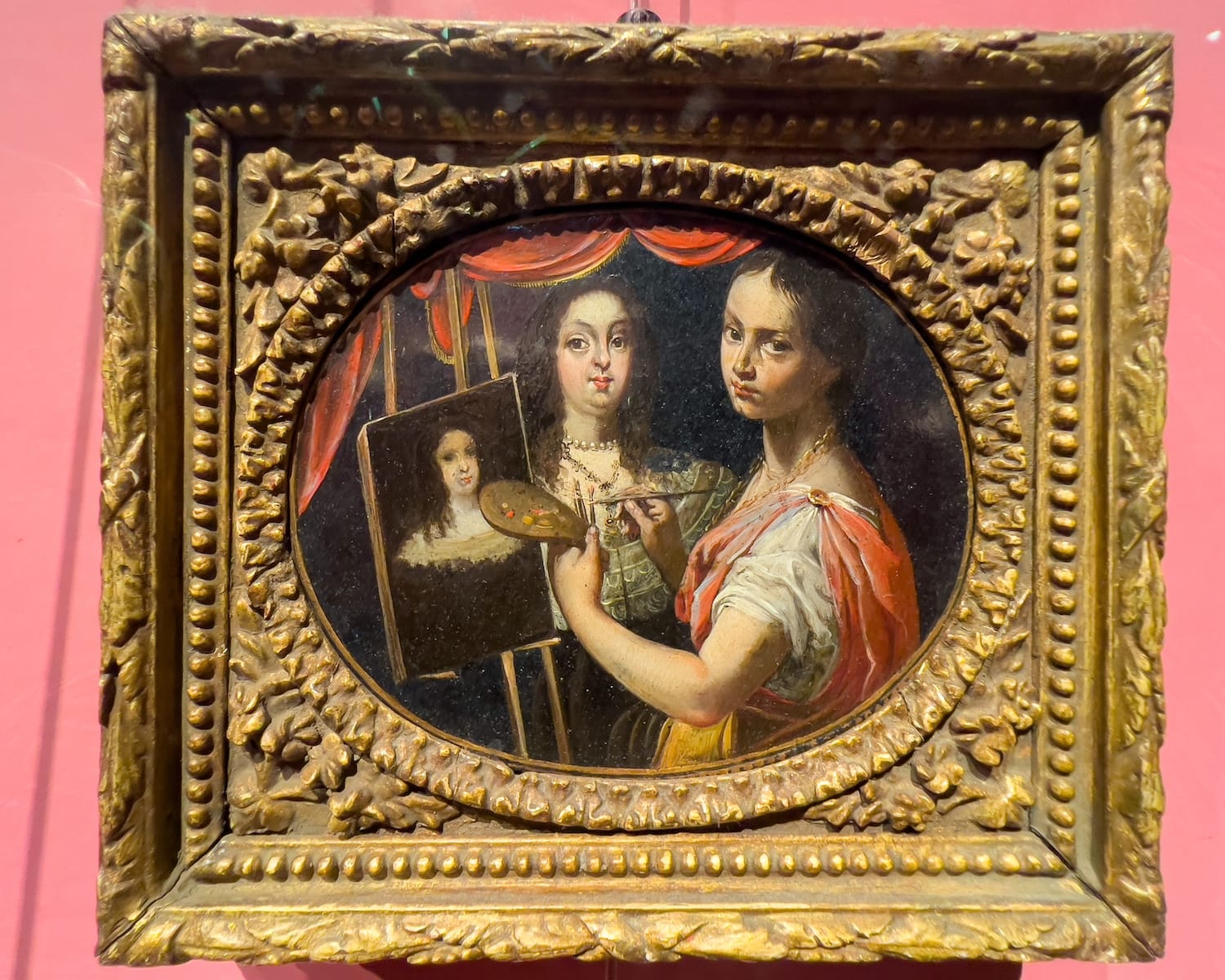
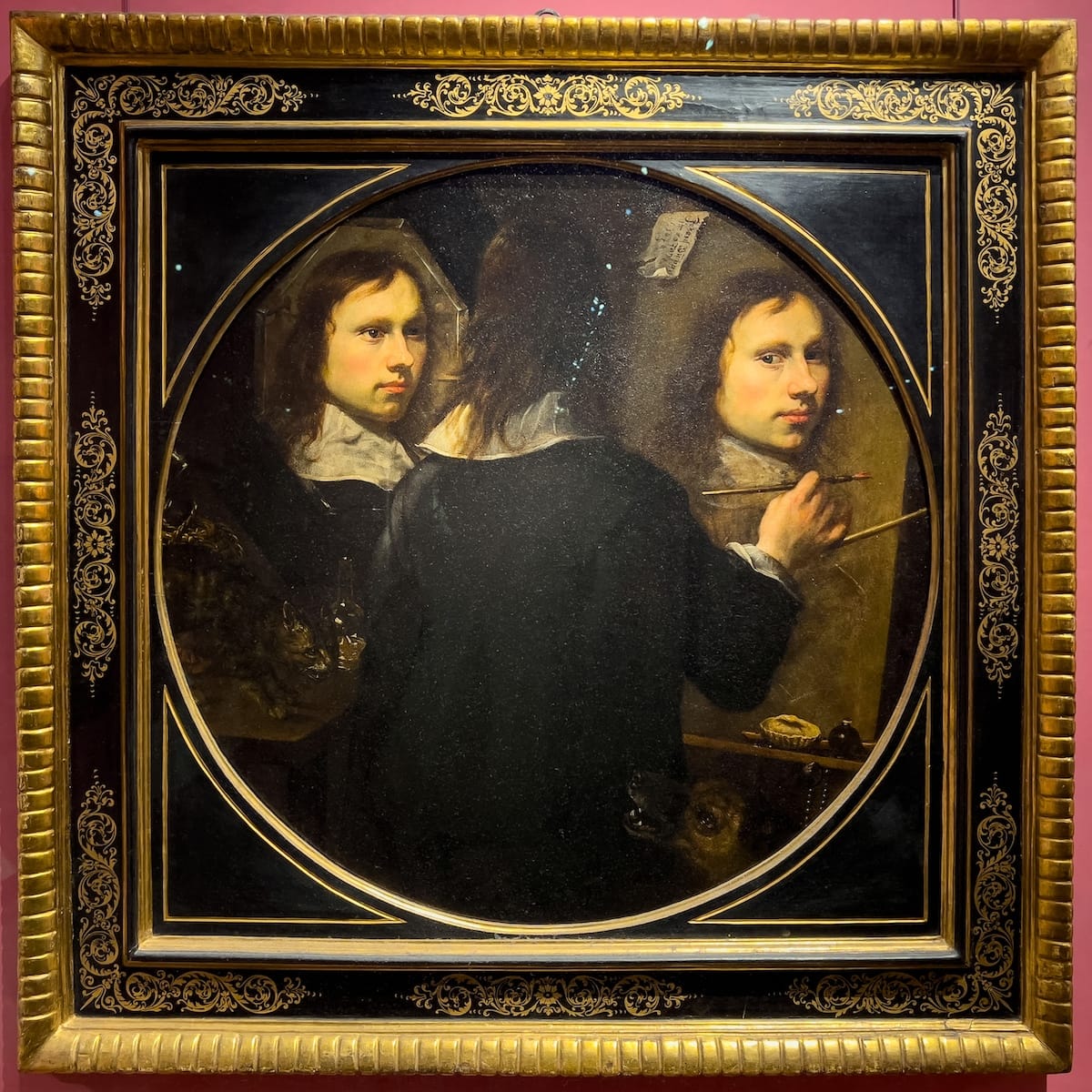
Carlo Dolci, Self-Portrait (1674) (left), Camilla Guerrieri, Self-Portrait With Vittoria della Rovere (1640) (middle), Johannes Gumpp, Self-Portrait (1646) (right)
Ever since reading Jacques Derrida’s Memoirs of the Blind: The Self-Portrait and Other Ruins I’ve been fascinated by self-portraits. I actually visited the exhibition at the Louvre and my signed copy of the catalogue is one of my most cherished possessions. The Uffizi also has a large gallery of self-portraits, from the 16th century all the way up to the present, including a self-portrait in sculpture by Berlinde de Bruyckere.
Each of the above three paintings invites a close reading. It’s interesting that Johannes Gumpp painted himself from behind, a side of himself that he would not be able to see. It’s also interesting that he included not only the portrait that he is painting, but also his supposed mirror image. And whereas he looks to the side in the mirror, in the painting he looks at himself painting and at the viewer. My guess is that Camilla Guerrieri chose to paint herself painting a portrait of Vittoria delle Rovere in the very early stages. Carlo Dolci painted himself holding another portrait of himself.
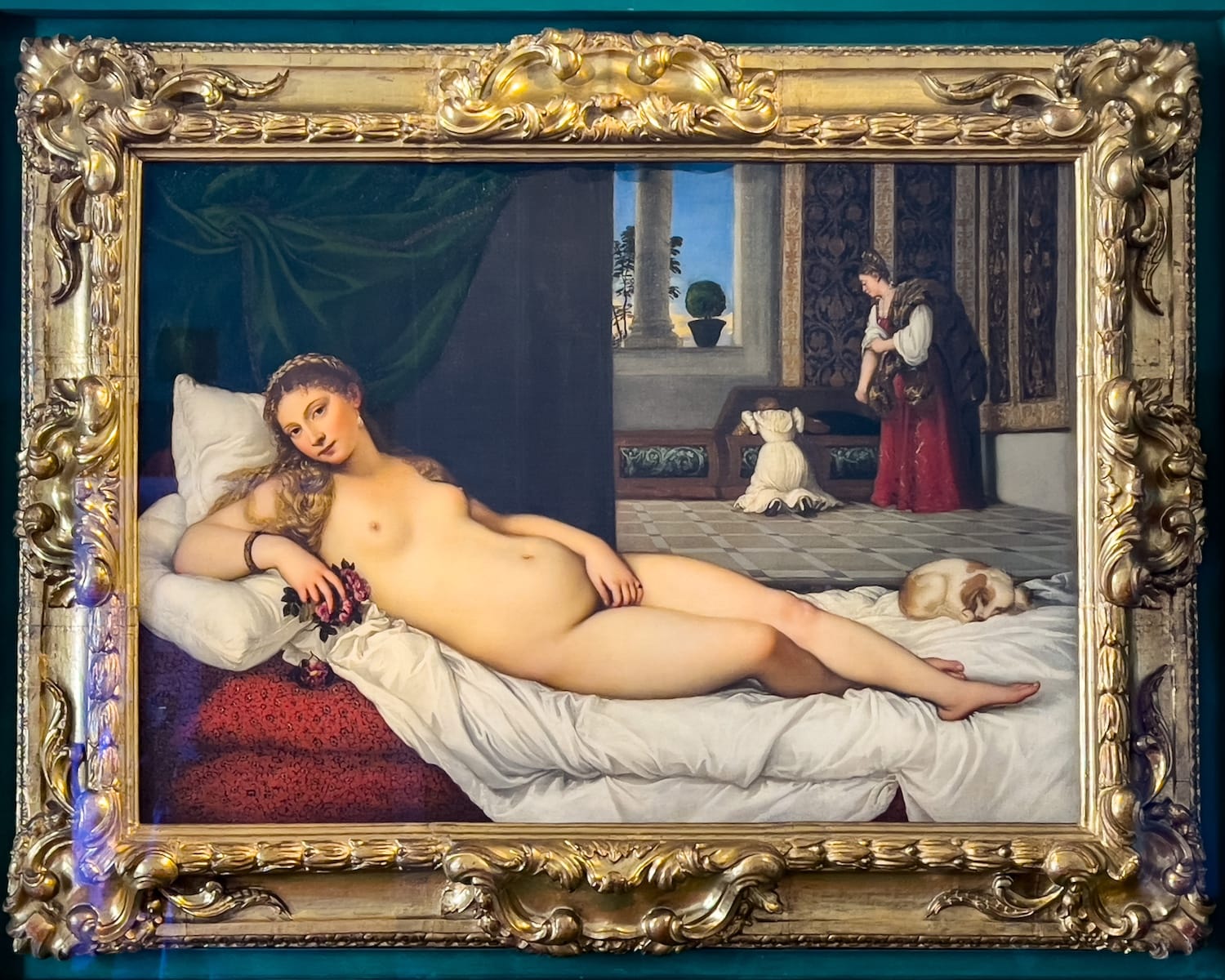
The "Venus of Urbino" (1538) is one of Titian's most celebrated works. It shows a young bride waiting to be dressed by her maids, who are busy in the background choosing her clothes for the celebration of a domestic ritual known in Venice as the "toccamano" (touching of hands), whereby the bride gave the groom her consent to wed him. The vase of myrtle on the window ledge and the dog on the bed are also marital symbols.